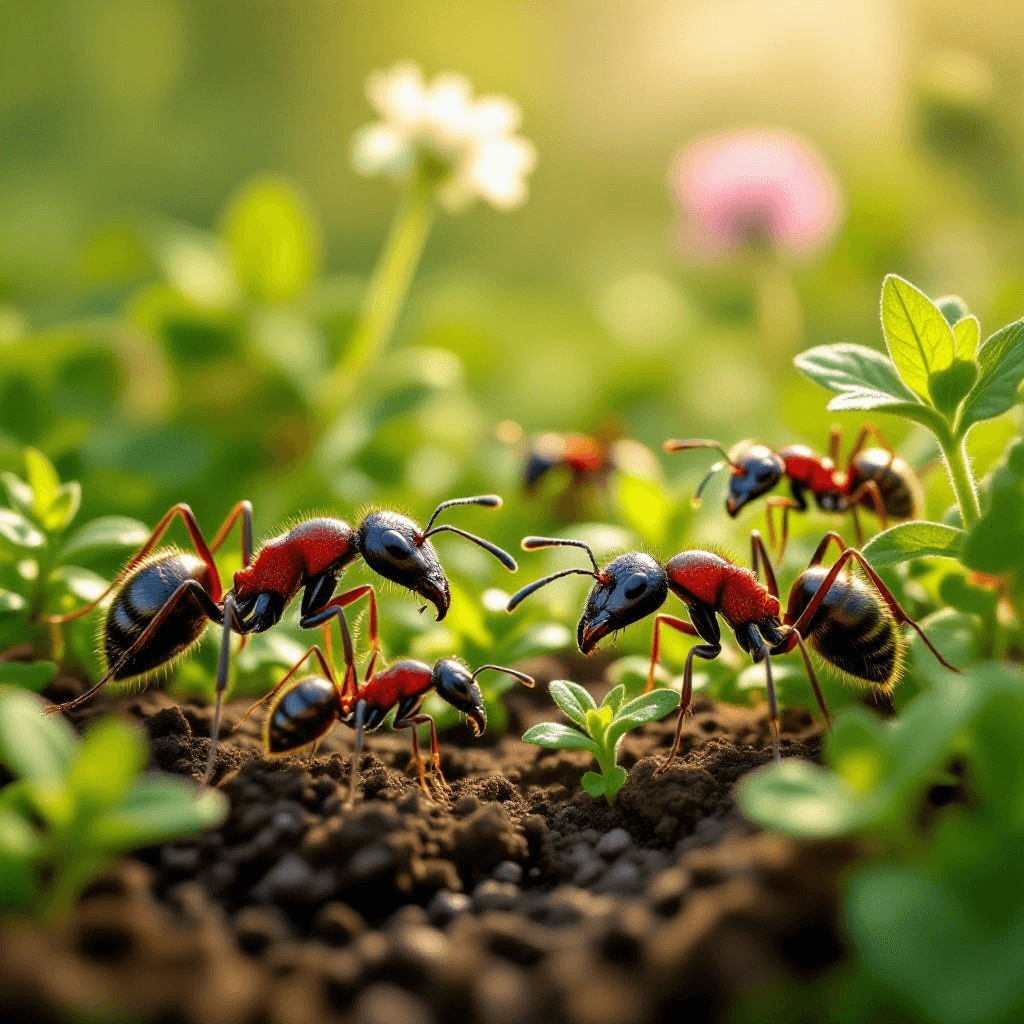Understanding Nematodes: The Microscopic Threat to Your Garden
Nematodes are microscopic, multicellular organisms that belong to the phylum Nematoda. They are found in a diverse range of environments, including marine, freshwater, and terrestrial ecosystems. It is estimated that over 25,000 species of nematodes exist, contributing significantly to nutrient cycling and decomposition within these ecosystems. While many nematodes are beneficial and play vital roles in soil health, a subset of them, known as plant-parasitic nematodes, can pose significant threats to garden plants.
Plant-parasitic nematodes feed on the roots of plants, extracting vital nutrients and disrupting the plant’s natural processes. These harmful nematodes can cause various symptoms in affected plants, including stunted growth, yellowing leaves, and wilting. In severe cases, entire plants can succumb to nematode infestation, leading to substantial economic losses for both amateur gardeners and commercial growers. Recognizing the signs of nematode damage is crucial for early intervention and effective garden management.
Among the most notorious plant-parasitic nematodes are the root-knot nematodes (Meloidogyne spp.), which induce the formation of galls or “root knots” on roots, and the cyst nematodes (Heterodera spp. and Globodera spp.), known for their ability to form protective cysts on roots. These nematodes not only sap nutrients but also serve as vectors for various plant diseases. Understanding the biology and life cycle of these nematodes can greatly help gardeners develop effective control strategies.
Additionally, nematodes contribute to the soil ecosystem by acting as predators of bacteria and fungi, thus playing a balancing role in the soil food web. However, when the population of parasitic nematodes exceeds a threshold, they can become a detrimental force in the garden environment. Effective nematode control measures are necessary to ensure a thriving garden ecosystem and to protect valuable plants from these microscopic threats.
Organic Methods of Nematode Control
Nematode management in gardens can be effectively achieved through various organic methods that align with sustainable gardening practices. One of the fundamental strategies is crop rotation. By systematically changing the types of crops grown in a particular area, gardeners can disrupt the life cycle of nematodes. This practice not only reduces nematode populations but also enhances soil health by varying nutrient uptake and replenishing necessary soil components.
Additionally, utilizing nematode-resistant plant varieties is a highly recommended method. Certain plants, such as marigolds, have been shown to deter nematodes due to their natural compounds. Planting these varieties can help create a barrier against nematode infestation while providing aesthetic value to garden spaces. Another effective approach is the use of soil amendments, particularly organic matter such as compost. Incorporating organic matter improves soil structure and health, making it less conducive for nematodes to thrive.
Incorporating beneficial microbes into the soil is another organic method that significantly contributes to nematode control. These microorganisms can outcompete or parasitize nematodes, thus reducing their numbers naturally. Products containing beneficial bacteria or fungi can be introduced to enhance the microbial community in the soil, fostering a balanced ecosystem that suppresses pests.
Companion planting is also an essential technique in managing nematode populations. By strategically placing certain plants close together, gardeners can deter nematodes, ensuring healthier crops. Moreover, attracting natural predators, such as predatory nematodes and insects, to the garden can provide biological control of harmful nematode populations. These organic strategies contribute to a holistic approach in managing nematodes while promoting ecological balance within the garden environment.
Chemical Methods for Nematode Management
Nematode infestations can present significant challenges in gardening, necessitating effective control measures. One of the most commonly employed interventions involves the use of chemical control methods, particularly nematicides. These commercially available substances are designed specifically to target and reduce nematode populations, offering a viable solution for gardeners facing severe infestations.
Various types of chemical nematicides exist, with some acting as fumigants, while others function as systemic treatments or surface applications. Fumigants, for example, are applied to the soil before planting and penetrate the soil to kill nematodes throughout the root zone. Systemic nematicides can be absorbed by the plants and interfere with nematode activity, while surface applications typically target those nematodes present near the soil surface. Each method has its unique effectiveness depending on the type of nematodes involved and the specific crop you are treating.
While chemical methods can provide rapid and significant results, it is crucial to adhere strictly to application guidelines and safety precautions. Proper protective gear, including gloves and masks, should be worn during application to minimize exposure. Additionally, it is important to consider the potential environmental impacts of chemical treatments, as the runoff may affect beneficial organisms, groundwater, and surrounding plant life.
When comparing chemical approaches with organic methods, several pros and cons emerge. Chemical nematicides offer immediate control, which can be a necessity for serious infestations. However, over-reliance on chemical solutions may lead to resistance development in nematodes and potential harm to ecosystems. In contrast, organic methods, such as crop rotation and beneficial nematode application, promote long-term soil health but typically require a more extended timeframe to achieve significant results. Ultimately, the choice between chemical and organic methods should be made based on the specific circumstances of the garden, including severity of infestation and the gardener’s ecological priorities.
Implementing a Nematode Management Plan: Best Practices
Creating an effective nematode management plan is crucial for maintaining the health of your garden and ensuring successful plant growth. The first step is to monitor and assess your garden regularly. Conducting soil tests can help identify the presence and levels of nematodes, providing essential insights into the types and population densities that may be affecting your plants. Knowing the specific species present allows for a targeted approach to management.
Once an assessment has been made, integrating both organic and chemical methods based on the severity of the infestation can enhance the efficacy of the management plan. Organic solutions, such as beneficial nematodes, crop rotations, and organic amendments, may be sufficient for mild to moderate issues. In cases where infestations are severe, selective chemical treatments may be necessary. However, it’s essential to use chemicals responsibly and according to label instructions to minimize any adverse effects on the environment and non-target organisms.
Record-keeping is another vital aspect of a successful nematode management plan. Documenting your observations, treatments applied, and outcomes will help refine your approach over time and provide valuable data for assessing the effectiveness of your strategies. Additionally, this information can help inform decisions on whether changes to cultural practices or interventions are warranted.
Timing of interventions is critical for maximizing their effectiveness. Implementing treatments during key growth stages of plants can significantly mitigate the damage caused by nematodes. Furthermore, ongoing maintenance strategies, such as soil health improvement and practicing good sanitation, will help prevent future infestations. Implementing these best practices will equip gardeners with the tools needed for long-term nematode control, fostering a thriving garden ecosystem that is resilient to pests.


